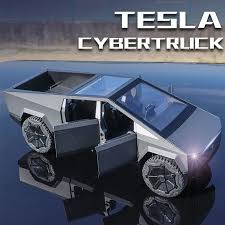Is the 2021 Tesla Model 3 enough Safe?
The Tesla Model 3 received high safety ratings from various organizations. In 2019, the National Highway Traffic Safety Administration (NHTSA)gaveModel 3-five stars in all categories, including front, side, and rollover. Model 3 received a 5-star overall safety rating from the European New Car Assessment Program (EuropeanNCAP).

The Tesla Model 3 is among motor trends’ safest cars for 2021.
Today, automobile protection is most of the pinnacle worries for consumers. The National Highway Traffic Safety Administration currently posted its automobile protection scores report. And EV consumers may be satisfied to recognize the 2021 Tesla Model 3 earned five stars from the NHTSA. But the Model three isn’t the simplest 2021 Tesla version to have aced this year’s protection tests.
The Tesla Model 3 of 2021 has received high safety ratings from independent agencies such as the National Highway Safety Administration (NHTSA) and the Insurance Institute for Highway Safety (IIHS). The NHTSA has given the model a 32021a5-star overall safety rating, which is the highest possible rating. The car received five stars in all individual crash tests, including front, side, and rollover tests. Similarly, the IIHS awarded model 3 2021 with the highest safety score "TopSafetyPick+" and indicated that the car performed well in allIIHScrash tests, including challenging small overlap front tests. Model 3 also has various safety features, such as advanced driver assistance systems (ADAS) such as automatic emergency brakes, adaptive cruise control, and lane departure warnings. Overall, the Tesla Model 32021 seems to be a safe car with high safety ratings and safety features. However, it is important to remember that no car is completely immune to accidents and that safe driving practices are still essential.
The NHTSA states that the general reputation of the famous person" combines the driving power and the scores of the famous passenger person directly into a frontal rating of an unmarried man. The front barrier check simulates head-on collisions between comparable vehicles with each moving at 35mph. However, car protection companies including the NHTSA are more concerned about the overall performance of an automobile within the collision of the aspect barrier or the inspection of the aspect effect because the styles of accidents bring the greatest likelihood of serious injury and death. According to the World Health Organization, “in the affecting of motor vehicles to motor vehicles, the threat to the death of motor vehicles 85% at 65km/h”. As a result, the NHTSA simulates cross-sectional collisions of moving another object at about 40mph (64.5 km/h).
The Tesla Model 3 of 2021 has received high safety ratings from independent agencies such as the National Highway Safety Administration (NHTSA) and the Insurance Institute for Highway Safety (IIHS). The NHTSA has given the model a 32021a5-star overall safety rating, which is the highest possible rating. The car received five stars in all individual crash tests, including front, side, and rollover tests. Similarly, the IIHS awarded model 3 2021 with the highest safety score "TopSafetyPick+" and indicated that the car performed well in allIIHScrash tests, including challenging small overlap front tests.
Model 3 also has various safety features, such as advanced driver assistance systems (ADAS) such as automatic emergency brakes, adaptive cruise control, and lane departure warnings. Overall, the Tesla Model 32021 seems to be a safe car with high safety ratings and safety features. However, it is important to remember that no car is completely immune to accidents and that safe driving practices are still essential.
The NHTSA states that the general reputation of the famous person" combines the driving power and the scores of the famous passenger person directly into a frontal rating of an unmarried man. The front barrier check simulates head-on collisions between comparable vehicles with each moving at 35mph. However, car protection companies including the NHTSA are more concerned about the overall performance of an automobile within the collision of the aspect barrier or the inspection of the aspect effect because the styles of accidents bring the greatest likelihood of serious injury and death. According to the World Health Organization, “in the affecting of motor vehicles to motor vehicles, the threat to the death of motor vehicles 85% at 65km/h”. As a result, the NHTSA simulates cross-sectional collisions of moving another object at about 40mph (64.5 km/h).
Previous entry: How to fix electric vehicle breakdown









